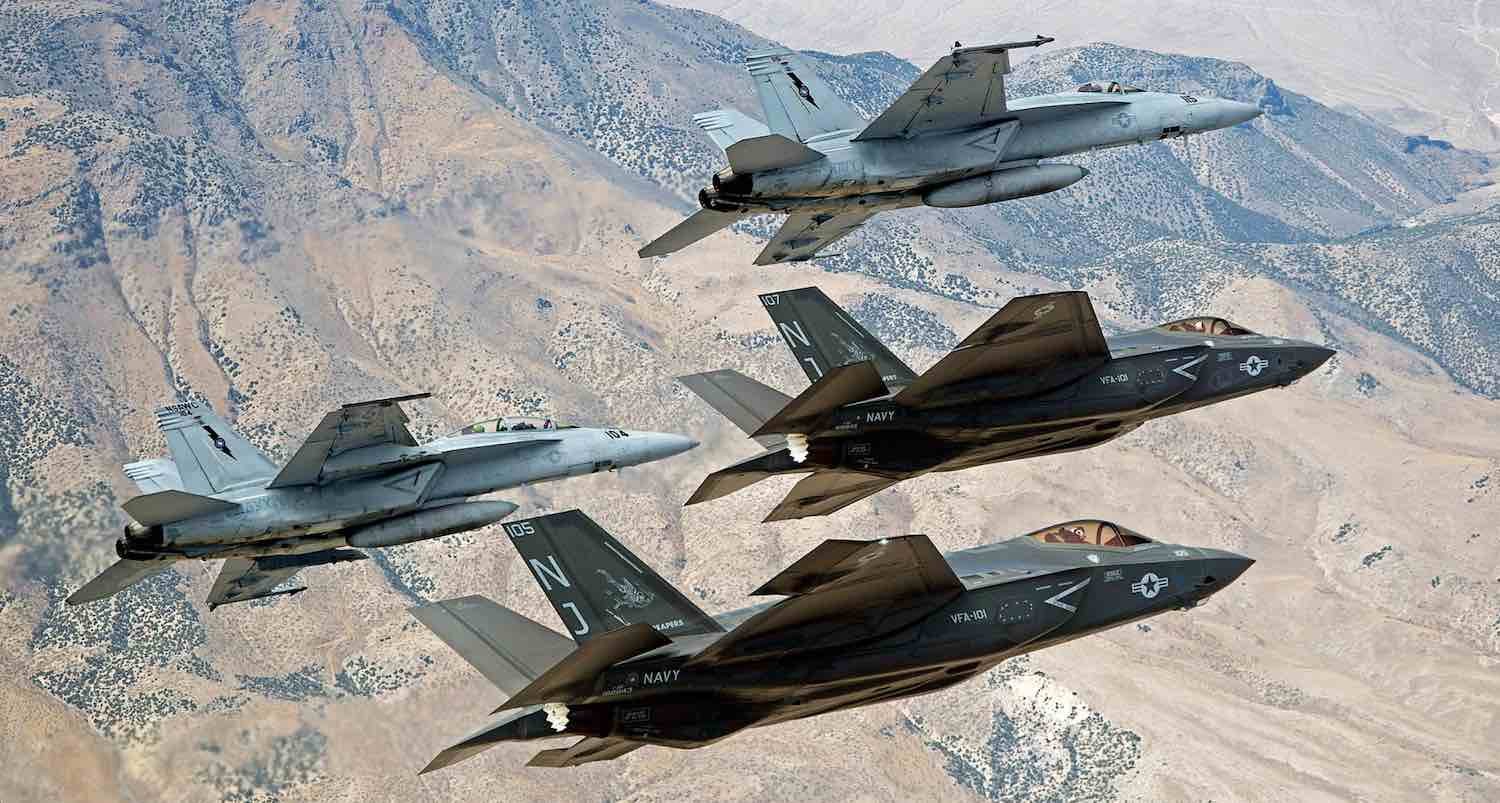Lockheed Martin’s new Mako hypersonic missile has officially made its debut, marking the arrival of the first hypersonic weapon developed for compatibility with fifth-generation fighter aircraft.
Capable of delivery from the internal weapons bay of stealth multirole combat aircraft like the F-35, Mako is a stand-off hypersonic air-launched missile developed jointly by Lockheed Martin and CoAspire, who recently unveiled the new weapon at the Navy League’s 2024 Sea Air Space exposition in Maryland.
Developed as a weapon with versatility both in terms of its performance and its cost, Lockheed Martin has presented the Mako to the U.S. Navy, with the potential for additional use on submarines and surface warships in the military’s arsenal. Notably, at the Mako’s official unveiling earlier this month, images were featured that depicted what appeared to be a U.S. Air Force F-35A deploying six of the missiles.
Like its famous and deadly namesake, the Mako shark, Lockheed Martin’s new missile is built to enable quick, devastating action. Designed with rapid capabilities and prowess in multi-target engagement, the Mako is the result of more than seven years of development.
Originally developed as an answer for the Air Force’s Stand In Attack Weapon (SiAW) program, Mako has been presented to the Navy as a multi-mission system capable of attacking a variety of different targets, and which is essentially ready for use.
Despite its design parameters, it has been confirmed that Mako will not be used for the Navy’s Hypersonic Air Launched Offensive (HALO) program.
At just 13 feet long and weighing close to 1,300 pounds when fitted with a 130-pound warhead, the Mako missile is propelled by a solid-fuel rocket motor that helps reduce the overall costs of its operation. Based on its current design, Rick Loy, the Senior Program Manager for Lockheed Martin’s Missile and Fire Control division, recently confirmed that the missile can be used with virtually any aircraft possessing the common BRU-32 heavy-duty ejector rack.
With development beginning in 2017, Mako’s design incorporates rapid response capabilities and a greater standoff range than its larger hypersonic cousins. This enables Mako’s use at much shorter ranges than those envisioned for the Navy’s HALO program or the AGM-183A Air-Launched Rapid Response Weapon (ARRW).
Presently, several of the Mako hypersonic missile’s capabilities remain unknown, which include specifics about the weapon’s multiple guidance systems. However, it is known that the Mako is capable of speeds reaching at least Mach 5 and that the weapon has been fit-checked both electronically and on actual fighter jets and other aircraft that include the Navy’s F/A-18E/F Super Hornet, as well as the similar two-seat EA-18G Growler. Similar fit-checks have also been conducted with the F-16, the F-15, and all three versions of the F-35 Lightning II.
Aircraft in the F-35 family, which specifically include the F-35A and F-35C, can carry the new Mako missile internally, whereas the F-35B and other aircraft would be required to carry the missile via external pylons. Combining internal and exterior loads would allow as many as six of the missiles to be carried by the F-35A.
Amid rising tensions with nations like China, the Mako’s performance and capabilities could provide a crucial advantage in the event of a conflict, given the new missile’s readiness for use against ballistic missile systems and mobile air defense capabilities that are likely to be utilized as part of anti-access/area denial strategies both China and Russia would likely employ.
Speaking recently at the Navy League’s 2024 Sea Air Space exposition, Rick Loy hinted at the possibility that the Mako could see additional use in the years ahead from surface or ground launch systems, “or even sub-surface like other weapons” that would conceivably extend Mako’s capabilities beyond just launch from aircraft.
Lockheed Martin has also implied that the weapon may be used by other countries, where the missile would offer an accessible and cost-effective solution for militaries wishing to acquire hypersonic capabilities.
Although official imagery depicting the Mako either in real-world testing or artistic representations has yet to be released by Lockheed Martin, video of the new missile as it appeared earlier this month at the Sea Air Space exposition has been made available by Naval News on its YouTube channel, which can be viewed here.
Micah Hanks is the Editor-in-Chief and Co-Founder of The Debrief. He can be reached by email at micah@thedebrief.org. Follow his work at micahhanks.com and on X: @MicahHanks.

